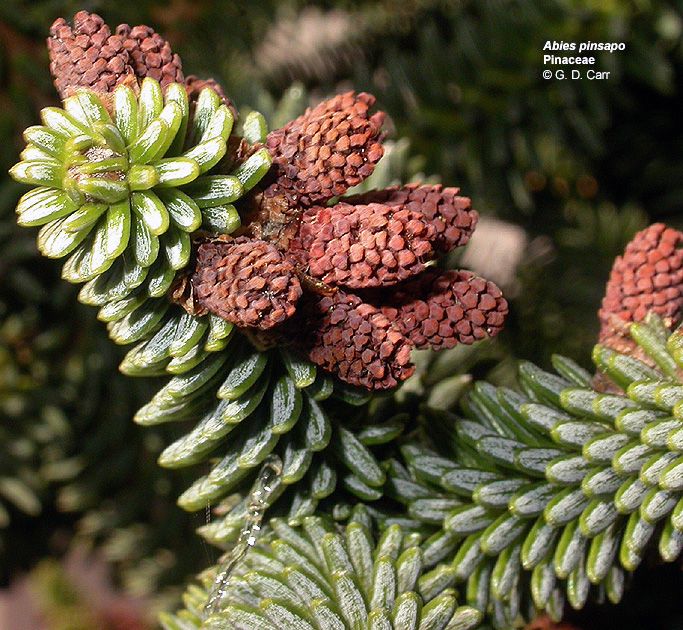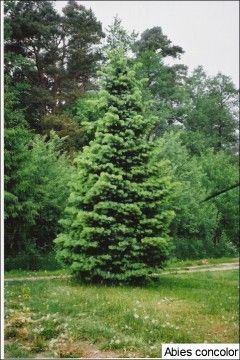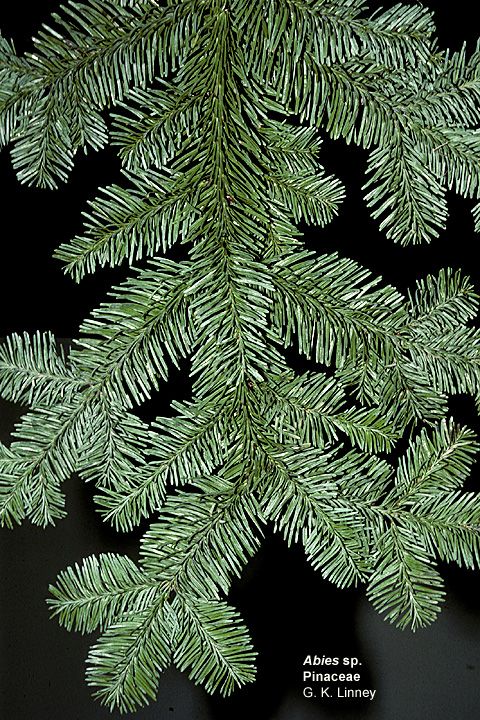Abies sp.



Common name: fir
Family: Pinaceae
Lighting: Full sun
Temperature: The firs are evergreens which prefer cold climates (although most species recommended for bonsai by the books are relatively heat-tolerant). Generally hardy in zones 3 through 7.
Description
Firs have a pyramidal shape and horizontal branching with the lower branches drooping toward the ground. They may grow to 40 - 60 feet in the wild. The foliage is a wonderful blue-gray which appears much like that of the Colorado blue spruce. Firs resemble spruce trees with the major difference being that firs have erect cones, as opposed to spruces whose cones hang down.
Care and cultivation
Watering
They prefer it slightly dry, and overwatering is much worse than underwatering.
Feeding
Feed in spring and autumn. The experts disagree on frequency of feeding; Tomlinson recommends every two weeks, and Resnick monthly. Firs like slightly acid soil, so the occasional dose of Miracid is appreciated.
Pruning and wiring
New shoots should be pinched back throughout growth. The fir is best wired in spring. It is remarkably versatile, and can be trained into most styles.
Propagation
Seed, layering or cuttings, except for the dwarf korean fir, Abies koreana 'Compact Dwarf'. Since it does not produce cones, it must be propagated through grafting.
Repotting
Firs need to be acclimated to pot culture, so they should be planted in oversized pots and introduced into small pots gradually. They can be transplanted in either spring or autumn, and may need it every 2 years. Tomlinson recommends basic soil mix, although with the fir's preference for dryness a fast-draining soil might be worth a try.
Pests and diseases
Pests: Generally none are serious, but a few cause some damage. The balsam twig aphid feeds on the new growth of fir causing distorted needles and deposits of honeydew. Trees can tolerate fairly heavy infestations for a short period of time but are weakened by repeated heavy infestations. Bagworm builds and lives in a two to three-inch long sack built from needles and other debris. The insect overwinters as eggs in the sacks of the female. Control by hand-picking the bags in winter. The more common scale insects infesting fir are oystershell, pine needle, and cottony cushion. These insects are hard to control once inside their shell or waxy coatings. The crawler stage is most easily controlled with appropriate pesticides. Spider mites in hot areas cause older needles to lose green coloration and become yellowed. The insects are very small and difficult to see so infestations can become severe before being noticed.
Diseases: Generally none are serious enough to cause concern. Needle and twig blight results in the shriveling and reddening of the new growth. The needles of current seasons growth are curled and dead. Terminal growth and some laterals may be killed. Pine twig blight is a problem on stressed trees. The fungus will not ordinarily be a problem unless the host plant is weakened. The infection usually begins at the terminal bud near a branch tip. Infection takes place in late summer and the disease progresses down a twig into a node. At times the infection may go into 2-year-old wood. Needles on infected branches turn reddish then die. Cut off and destroy infected twigs. Several rusts attack firs but are not a problem on landscape trees. The diseases are rarely seen. Several different fungi cause cankers on the trunks and branches of firs. Cankers are sunken areas in the bark that gradually get larger. When the stem is completely encircled the part beyond the canker dies. Keep the plants healthy by fertilizing and watering during dry weather. Cankers can be largely prevented by avoiding plant injury. Root rots caused by several fungi kill roots and rot wood. Little can be done to control the diseases other than to keep trees healthy to prevent disease infection. Maintain tree health by regular fertilization and watering during dry weather.
The following firs are recommended for bonsai
Abies alba - silver fir: dark green needles, cylindrical cones.
A. concolor - white fir, silver fir, Colorado fir: hardy to zone 4. Can grow to 80 ft. in the wild. Gray bark, bluish-green 2 inch needles. Native to southwestern US. This fir can take exposure and will withstand some heat and drought better than most firs.
A. firma - Momi fir, Japanese fir: dark green 1 1/2 inch needles. Hardy from zones 6 to 9. Native to Japan. Grows up to 70 ft. tall in the wild. It is one of the most heat tolerant firs.
A. homolepis - Nikko fir: dark green, 1 inch needles. Hardy from zones 4-7. A native of Japan, it can grow up to 80 ft. tall in the wild. Heat-tolerant.
A. koreana - Korean fir: a small fir. Dark green needles, less than 1 inch long. Its most outstanding feature is its brilliant violet cones.
A. koreana 'Compact Dwarf' - dwarf Korean fir: dwarf variety; dark green needles, no cones. Zones 5-7.
Abies lasiocarpa - Alpine fir: grayish-green needles, 1 1/2 inches long. Native to area from Alaska to Northern California. Purple cones. Zones 5-7.
A. lasiocarpa arizonica - cork fir: silver-gray needles, corky bark.
A. lasiocarpa arizonica 'Compacta' - dwarf cork fir: silvery blue-gray needles, dwarf variety.
A. nebrodensis - Nebrodi silver fir: similar to A. alba, but denser needles, smaller size. Native to the Nebrodi Mts. of Italy, it is almost extinct in the wild.
Articole asemănătoare
-
Parcul National Ceahlau
Ceahlaul este un munte legendar, un adevarat Olimp al romanilor. Aria naturala cu acelasi nume se intinde in extremitatea central-vestica a judetului Neamt, pe teritoriile administrative ale comunelor Bicazu Ardelean, Ceahlau si Tasca si al orasului Bicaz.
-
Rezervatia codrul secular Glodeasa
Inaintand spre Muntii Baiului pe Valea Doftanei, in amonte de satul Traisteni drumetul intalneste codrul secular Glodeasa si rezervatia cu acelasi nume.
-
Aria Protejata Poda, Bulgaria
Aria Protejata Poda se gaseste la cativa kilometri departare de Bourgas, pe drumul catre Sozopol. In ciuda dimensiunilor reduse, este una dintre cele mai apreciate atractii bulgare aflate pe litoralul Marii Negre si poate constitui oricand un popas pentru turistii romani.
-
Daunatorii plantelor
Paduchele lanos (Pseudococcus sp.) , Paduchele testos (Lecanium sp., Diaphes sp., Saisseia sp.) , Afidele ( Aphis sp., Myzus sp.) sau paduchii (pot fi si verzi, negrii, galbeni sau cenusii), Musculita alba (Trialeurodes vaporariorum) , Tripsul (Thrips sp, Thaeniothrips sp.) , Acarieni (Tetranychus, Rhizoglyphus, Tarsonemus) - acestia sunt doar cativa dintre plantele daunatoare ale pantelor.
-
Micozele
Micozele care pot aparea la plante sunt diverse si exista metode eficiente de combatere a acestora pentru a va salva plantele de la moarte.